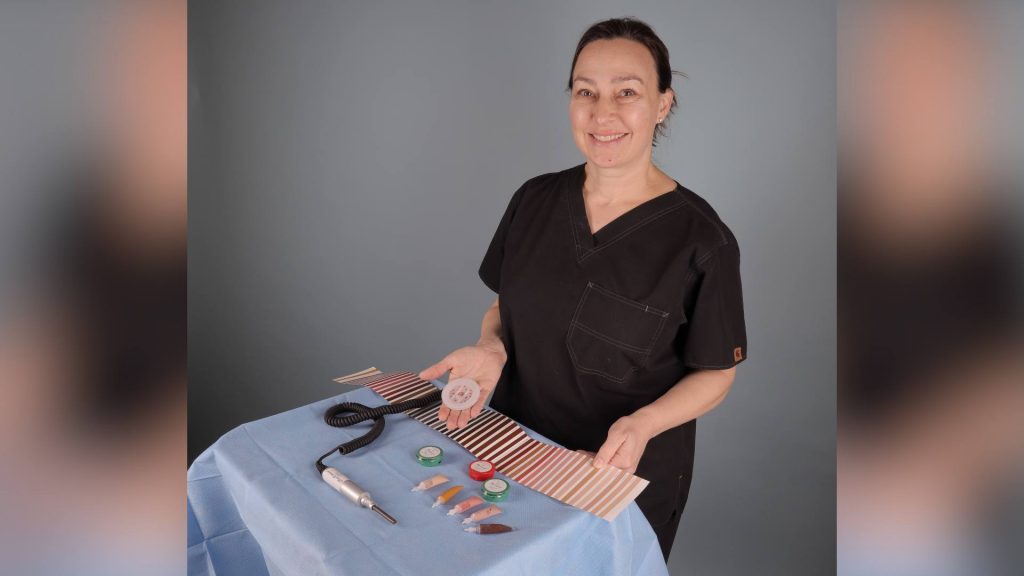-
Cancer
3D tattooing replicates skin tone after breast reconstruction

While mastectomy can be a lifesaving procedure for many women with breast cancer, the surgery can take an emotional toll that can lead to a distorted self-image. Breast reconstruction can be part of a comprehensive treatment that can improve the appearance of the breasts, often improving a patient's self-confidence. Some women seek the next step in breast reconstruction.
"Most women go through reconstructive surgery after their treatment," says Jordan D. Miller, Ph.D., director of the Center for Surgical Excellence at Mayo Clinic. "But at the end of the day, how do you ensure that their journey to becoming cancer-free ends with full restoration of their self-image?"
That question was echoed by Dr. Alanna Rebecca, chair of Plastic and Reconstructive Surgery at Mayo Clinic in Arizona, who has observed a need for more resources for women to restore a sense of wholeness and completion following their surgeries.
In many cases, the lack of a defined areola around the nipple is a significant issue for women who hope to return to normalcy following reconstructive surgery.
Dr. Rebecca's solution is 3D tattooing, technology that replicates the visual illusion of the areola. It is the final touch in the restoration. The goal is to provide a natural appearance if the color of the actual areola has faded or is irregular.
It takes significant skill to simulate the natural shape, dimension and color of the nipple and areola, which is why Dr. Rebecca, Dr. Miller and Mark Stemler, a Mayo Clinic health systems engineering associate collaborated on the idea that would improve the appearance of the areola with color pigmentation that restores a realistic look.

Dr. Rebecca and her team worked diligently to not only provide a novel method of tattooing the nipple and areola area to create color-match technology, but also provide the safety that comes from being in a hospital or clinic setting that is required by the Centers for Medicare & Medicaid Services or the Joint Commission to implement appropriate sterilization measures.
The team's idea was submitted to the Mayo Clinic Innovation Accelerator Program, directed by Dr. Miller, which proposes innovative solutions that improve patient care. Approval came within a week. The mission of the Innovation Accelerator is to create a culture in which novel ideas accelerate to address unmet patient needs.
Given the go-ahead to proceed, Dr. Miller and Stemler worked with a series of specialized external contractors to develop stencils and color-matching technology to recreate a natural nipple appearance. Ultimately, they were able to create a tattoo with a natural appearance using variations of five colors that are used to provide natural hues to a new nipple. Some colors are used for the base color, while others are used to add shading to create a 3D appearance. The stencil makes it similar to "paint-by-number," ensuring consistent, realistic and customizable results.
Dr. Rebecca, co-author of a study, "Nipple-Areola Stencil for Three-Dimensional Tattooing: Nipple by Number," advocates that the 3D-tattooing technology is a critical reconstructive component in women following mastectomy. The study concludes that 3D and 4D nipple-areola tattooing is easy, quick and accessible to providers and patients alike.
One of Dr. Rebecca’s grateful patients from Albuquerque, New Mexico, insists that her areola tattooing experience was "the finishing touches on what was already a phenomenal job that Dr. Rebecca did throughout my reconstruction." The patient says her tattooing result is the "icing on the top that allows me to look and feel how I looked prior to my mastectomy. Dr. Rebecca is my saving grace."
While there are tattoo parlors that promote their own nipple and areola coloration, Mayo Clinic’s procedures are performed by professionals in a clinical setting to create a biologically-accurate nipple appearance that is unique to each patient. Women are advised that when their health providers create the tattoos, it is a safer environment.
The study about 3D tattooing notes that finding a tattoo parlor can be anxiety-provoking to many patients who would prefer the tattooing in a medical facility, preferably where their breast reconstruction was performed.
"In addition to the aesthetically pleasing results, knowing that it takes place in a safe environment with no risk of communicable diseases after you have already gone through breast cancer, is a plus," says Dr. Rebecca. "Another huge benefit to having it performed in our office is because it is certified, rather than going to a tattoo parlor where the artist won’t provide that level of care."
With the help of generous benefactors of Mayo Clinic, including the William A. and Suzanne H. Hodder Family, the Regis Foundation for Breast Cancer Research and William G. Little, the 3D technology for this innovation has become available throughout Mayo Clinic.
The plan for the future is to expand the service using artificial intelligence to create algorithms to generate realistic pigmentation and dye for the tattoos.







